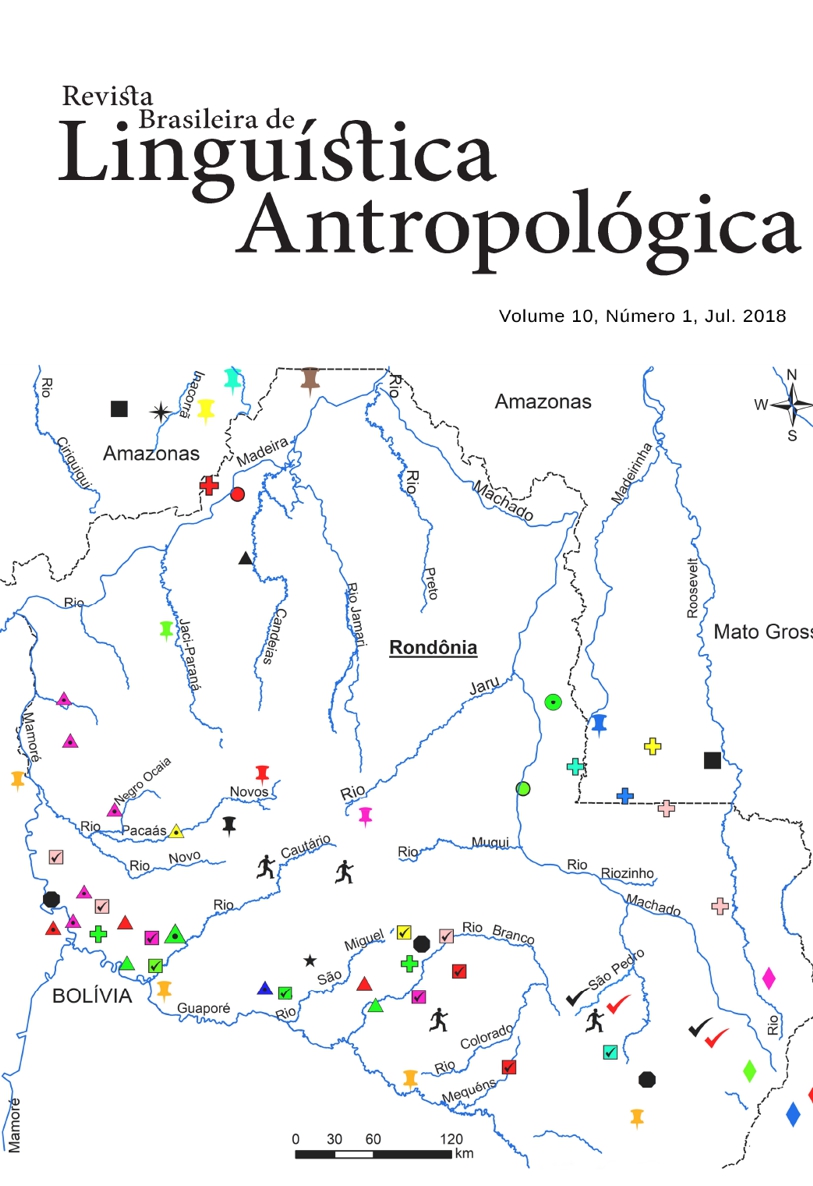The Makurap Women And The Marico Know-How
DOI:
https://doi.org/10.26512/rbla.v10i1.19050Keywords:
Makuráp. Marico. Women. Know-how. Rondônia.Abstract
Plants evoke relations of belong to a territory. Planted trees, flowers and medicines are evidences of caring, domesticating of the places, the existence of human occupation, as well as a knowledge that turn the places of the wood familiar. Plants refer to lived and known territory, or, also, in some cases, a territory already occupied before by another groups. The present research dedicates to understand the existent relations between Makuráp women and the know-how attached to tucum (Astrocaryum sp.) plant, in this context. Therefore we intend to build a comprehension about the life of the elderly Makuráp woman named Juraci Menkaiká starting from her biographical trajectory engendered with the know-how of marico, bag made from the leaves of the tucum used to carry the harvest of the farm and transport objects from one place to another. This research was made from successive fieldworks done between October of 2014 and February of 2018, along with the Makuráp people, in the Indigenous Land in Rio Branco, RO. The methodology used was semistructured interviews and ethnography.
Downloads
References
Machado, Juliana Salles. Lugares de gente: mulheres, plantas e redes de troca no delta amazônico. Rio de Janeiro: Museu Nacional, UFRJ, 2012. Tese (Tese em Antropologia Social), Museu Nacional, UFRJ, 2012.
Maldi, Denise. O Complexo Cultural do Marico: Sociedades Indígenas dos Rios Branco, Colorado e Mequens, Afluentes do Médio Guaporé. In: Boletim do Museu Paraense Emílio Goeldi. Série Antropologia, Vol. 7 (2). Belém, 1991.
Mentore, Laura. The Intersubjective Life of Cassava among the Waiwai. Anthropology and Humanism. Vol. 37, Issue 2, 2012.
Moore, Christopher R.; Thompson, Victor D. Animism and Green River persistent places: A dwelling perspective of the Shell Mound Archaic. Journal of Social Archaeology, 2012.
Müller, Regina Pollo. Corpo e imagem em movimento: há uma alma neste corpo. Revista de Antropologia. Vol. 43, n. 2. São Paulo, 2000.
Oliveira, João Pacheco de. Uma etnologia dos “índios misturados”? Situação colonial, territorialização e fluxos culturais. Mana. Vol.4, n.1. Rio de Janeiro, 1998.
Silva, Fabíola Andréa. As Tecnologias e seus Significados. Um estudo da cerâmica dos Asurini do Xingu e da cestaria dos Kayapó-Xikrin sob uma perspectiva etnoarqueológica. São Paulo: USP, 2000. Tese (Tese em Ciência Social), Departamento de Antropologia, Universidade de São Paulo, 2000.
Zedeño, Maria Nieves. The Archaeology of Territory and Territoriality. In: David, Bruno; Thomas, Julian. Handbook of Landscape Archaeology. Left Coast Press, California, 2008.
Downloads
Published
How to Cite
Issue
Section
License
Copyright (c) 2018 Revista Brasileira de Linguística Antropológica

This work is licensed under a Creative Commons Attribution 4.0 International License.
Authors who publish in RBLA agree to the following terms:
a) Authors maintain the copyright and grant the journal the right of first publication, and the work is simultaneously licensed under the Creative Commons Attribution License, which allows the sharing of the work with recognition of the authorship of the work and initial publication in this journal.
b) Authors are authorized to assume additional contracts separately, for non-exclusive distribution of the version of the work published in this journal (eg, publish in an institutional repository or as a book chapter), with recognition of authorship and initial publication in this journal.
c) Authors are allowed and encouraged to publish their work online (eg, in institutional repositories or on their personal page) at any point before or during the editorial process, as this can generate productive changes, as well as increase impact and citation of the published work.







